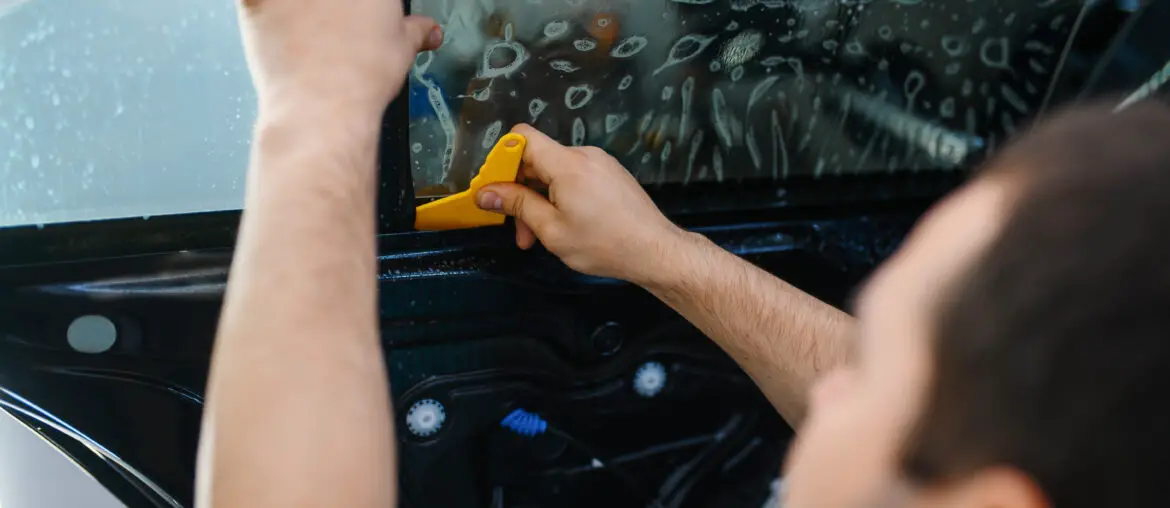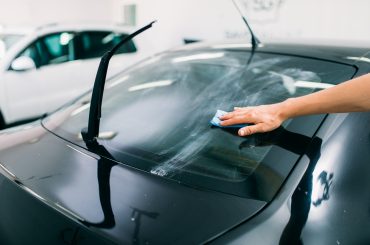The Delaware window tinting laws have been enforced to secure public safety. The causing of accidents can be minimized by ensuring the vision of drivers through proper window tinting applications. Therefore, the Delaware window tinting laws are applicable to all types of vehicles. Usually, car window tinting is done to reduce the amount of light entering the vehicle, reduce the heat generated, and also block harmful ultraviolet radiation. However, there would be situations where people tend to go beyond these requirements and color the windows with very dark shades to get more stylish looks upon their vehicles.
This might even obstruct the vision of the driver. Therefore, the regulation of these laws is based on this requirement, to safeguard the lives of both passengers and pedestrians. Following these rules correctly can also help you stay out of window tickets and fines.
The window tinting laws in the state of Delaware were enacted in 1992. This state was the 16th to enact the laws out of all 50 states. These laws have been updated from time to time. The amount of light allowed to be passed through the windows is indicated as VLT percentages which is the Visible Light Transmission factor.
The reflectivity of these tints is another consideration that might defect the vision of the oncoming vehicle drivers. The following indicates the legal limits allowed for both darkness and reflectivity of each window depending on the type of vehicle.

Table of Contents
Special Note to Out of State Drivers:
“The law applies to all motor vehicles which are operated on the roads and highways in this State, regardless of where such vehicles are registered.”
- As indicated by the authority of Delaware according to 21 Del.C. §302.
Window Tint Darkness in Delaware
Tint darkness for sedans, SUVs, and vans:
- Windshield: Non-reflective tint is allowed above the manufacturer’s AS-1 line.
- Front Side windows: No aftermarket tint allowed.
- Back Side windows: Any darkness can be used.
- Rear Window: Any darkness can be used.
Window Tint Reflection in Delaware
Tint reflection for sedans, SUVs, and vans:
- Front Side windows: No metallic or mirrored appearance.
- Back Side windows: No metallic or mirrored appearance.
If you are not interested in having window tints on your car windows you have another option of having dark windows in your vehicle. That is to have privacy glasses that are manufactured by the vehicle manufacturers themselves. Learn more about these from Privacy Glass Cars.
Other Rules and Regulations of the Delaware Window Tinting Laws:
- Side Mirrors
According to the Delaware window tinting laws, if the back window of the vehicle is tinted, then it is necessary to have dual side mirrors.
- Restricted Colors
No vehicle window tint colors are banned under the Delaware window tinting law. So you can use any colored window tint in this state, as long as they are within the legal limitations of allowed darkness. To check out more about this, refer to Window Tinting Shades Chart. However, most states have banned certain colored car window tints. Knowing about these restrictions would be beneficial as well.
- Certificates and Stickers
It is not necessary for film manufacturers to certify the film they sell in Delaware. However, a sticker is required to identify legal tinting. This sticker should be placed between the film and the glass on the driver’s side window. However, their requirements would be different in other states.
- Medical Exceptions
The state of Delaware permits medical exemptions for people who require special tint. To apply for this, the application form for medical waiver of tinted window law (MV 495) should be filled and. This form is not available online and has to be obtained from the nearest Department of Motor Vehicles in Delaware.
Requirements for Medical Exemptions:
As in the other states, medical exemptions are allowed for people who have special conditions where they need to get protected from direct sunlight. This includes photophobic and photosensitive conditions such as chronic actinic dermatitis, photosensitive eczema, and skin cancers. The medical prescription signed by a licensed medical practitioner, physicist, or dermatologist would also be required as proof of the health condition. This special tint would have to be removed when the vehicle is sold.
Even for people without medical exemptions, having car window tints is necessary to avoid health risks of eyes and skin disorders. The proper car window tint can keep away the harmful UVA and UVB radiation. You can read more about this on UV Blocking Window Film. The car window tints can also reduce the heat inside vehicles by blocking off infrared radiation. This is highly useful during hot, sunny weather and warm seasons. Learn more about this on How Window Tints Reduce Heat Inside Cars.
- Penalties
The fine for violating the Delaware window tinting laws ranges from $28.75 to $100. The best option for you to avoid getting window tickets is to install a legal window tint that is allowed in the state. If you have already installed a faulty window tint, you can easily remove it yourself by referring to How to Remove Window Tint.
Learn about the types of other window tints that you can choose from, along with the expenditure concerns from Types of Car Window Tint and How Much to Tint Windows, respectively. Compare the technologies of the ordinary and most affordable type with the most expensive type from Regular vs Ceramic window Tint.
Find the laws of all other states related to car window tinting from Window Tinting Laws in the U.S. by State.
State of Delaware Information
The state of Delaware is situated on the Atlantic Coast in the Mid-Atlantic region, in the northeastern portion of the Delmarva Peninsula. Maryland is situated to its south and west, while New Jersey is on the northeast and Pennsylvania on the north. The name Delaware was given after the English nobleman and Virginia’s first colonial governor Thomas West 3rd Baron De La Warr, which was originally called Cape Henlopen. The state of Delaware is the second smallest and sixth least populous state. However, it is also the sixth most densely populated state out of all the states. The population is 917,092. Its capital is Dover. The total land area is 2,490 square miles (6,452 square kilometers).
Keep in mind that Delaware tint laws can change daily and may be interpreted differently in your city or county. To be sure, we recommend double-checking our information with your local DMV or Law Enforcement Authorities. Furthermore please let us know if there are any changes to make.








